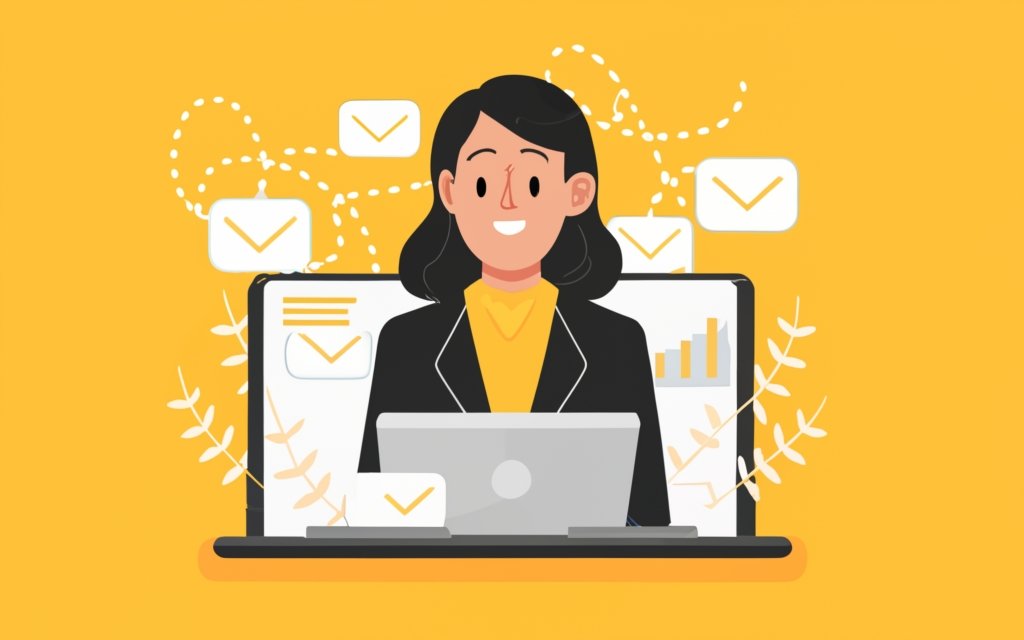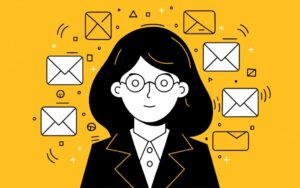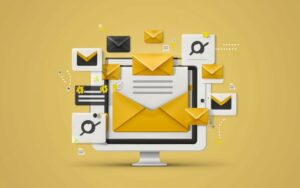Email marketing can be overwhelming, especially if you are new. There are so many different strategies, list-building tactics, best practices, and technologies to keep up with.
If you’ve been doing email marketing for a while, you’ve probably also discovered that it’s constantly changing. What worked well a few years ago might not work at all today. As such, you may have considered hiring an email marketing agency to help automate and scale your campaigns efficiently.
That’s why it’s important to be smart. One of the best ways to be smart with your email marketing is to use email marketing automation. Email marketing automation is a great way to save time and increase the effectiveness of your email marketing.
Today I’m going to share with you some of my favorite email marketing automation hacks to help you get the most out of your email marketing in the least amount of time.
1. Use an email marketing platform.
Email marketing platforms are designed to help you create, send, and track email marketing campaigns. They can also help you automate your email marketing.
With an email marketing platform, you can automate things like list segmentation, email personalization, and even the entire email campaign itself.
There are a lot of email marketing platforms out there, so it’s important to do your research and find the one that’s right for you. Some popular options include HubSpot, Mailchimp, and Constant Contact.
2. Set up autoresponders.
Autoresponders are a great way to set up automated emails to welcome new subscribers, thank them for signing up, and provide them with a brief overview of what they can expect from your emails.
If you’re going to set up an autoresponder, it’s important to remember to personalize the email. Autoresponders are in essence a welcome email, and it’s important to make a good first impression.
3. Use personalization.
Personalization is a top email marketing trend that shows no signs of slowing down. In fact, a study by Evergage found that 96% of marketers believe that personalization advances customer relationships.
When you personalize your emails, you make your subscribers feel like you’re speaking directly to them. This can help you build trust with your audience and improve your email engagement rates.
The best way to personalize your emails is to use your subscribers’ names in your subject lines and in the body of your email. Most email marketing platforms allow you to use merge tags to automatically insert your subscribers’ names into your emails.
You can also use personalization to create dynamic content in your emails. Dynamic content is content that changes based on your subscribers’ preferences or behaviors. This can include things like product recommendations, location-based offers, and more.
By using personalization and content automation, you can create highly targeted emails that are more likely to convert.
4. Create a welcome series.
When someone signs up for your email list, it’s important to make a good first impression.
You can do this by creating a welcome email series that helps new subscribers get to know your brand and what you have to offer.
Your welcome series should be made up of three to five emails that are sent over the course of a few weeks. Here’s what you should include in each email:
• Email 1: Welcome your new subscriber, thank them for signing up, and give them a brief overview of what they can expect from your emails.
• Email 2: Highlight your most popular blog posts, products, or services.
• Email 3: Share a personal story about your brand, introduce your team, showcase some customer testimonials or highlight brand events.
• Email 4: Offer a special discount or coupon code.
• Email 5: Ask your subscribers to follow you on social media, share your emails with their friends, or leave a review.
Creating a welcome series can help you build a strong relationship with your subscribers from the start, and it’s a great way to increase engagement and sales.
5. Use triggers.
Using triggers is a great way to keep your email list organized and segmented. Triggers can be a number of things, such as a subscriber’s birthday, a subscriber’s anniversary, a subscriber’s last purchase, a subscriber’s last interaction with your company, etc.
By using triggers, you can automatically segment your email list based on subscriber behavior. This will help you to send more targeted emails to your subscribers, which will lead to higher open and click-through rates.
6. Send abandoned cart emails.
If you have an e-commerce store, you can use email marketing to send automated emails to people who have added items to their cart but not checked out.
This is a great way to capture sales from people who have already shown interest in your products. You can even sweeten the deal by offering a discount or free shipping. Use an AI promotion email generator to generate persuasive emails that draw attention and drive sales.
Abandoned cart emails are typically sent within 24 hours of the cart being abandoned. You can also send a follow-up email a few days later if the customer still hasn’t made a purchase.
7. Resend emails to non-openers.
At the end of your campaign, send an email to those who didn’t open it. You can use the same subject line and email body, but change the “to” field to “didn’t open” and the “from” field to “missed you.”
This is a great way to increase your open rates and get more people to engage with your content. You can also use this tactic to promote your products or services to people who didn’t open your sales emails.
8. Repurpose your best content.
If you’re creating content for your blog or social media channels, why not repurpose that content for your email marketing campaigns?
If you have a blog, you can use email marketing to send your subscribers a monthly round-up of your best blog posts. Or, you can take the content from your blog posts and use that to create a new email series.
For example, if you have a blog post that outlines the 10 best ways to use your product, you could create a 10-day email series that sends your subscribers one tip a day.
Repurposing your content is a great way to save time and keep your email marketing campaigns fresh and interesting.
9. Utilize A/B Testing
Implement A/B testing to determine the most effective subject lines, email content, and calls to action. By sending different versions to a small segment of your audience, you can see which performs better and then send the winning version to the rest of your list. For example, you can add an interactive marketing proposal to one batch of your audience, and an in mail text proposal in another to see which one performs better. This ensures your emails are optimized for higher engagement and conversions.
10. Segment Your Audience
Divide your email list into smaller, more targeted groups based on demographics, past behavior, or purchase history. For example, an escape room company could send one targeted email to parents planning birthday parties and one to companies setting up end of year parties. This allows you to send more relevant and personalized emails, increasing the likelihood of engagement and sales.
11. Implement Drip Campaigns
Use drip campaigns to nurture leads and keep your audience engaged over time. Drip campaigns are a series of pre-written emails sent at specific intervals, guiding subscribers through the customer journey, from awareness to purchase.
12. Leverage Behavioral Data
Track and analyze subscriber behavior, such as email opens, clicks, and website visits. Use this data to trigger automated messages using LinkedIn InMail templates based on specific actions, such as sending a follow-up message after a subscriber clicks on a link or visits a particular page on your website.
13. Automate Follow-Up Emails
Set up automated follow-up emails for various scenarios, such as after a webinar, event, or purchase. These follow-up emails can thank attendees, provide additional resources, or encourage repeat purchases, helping to build stronger relationships and drive more sales.
14. Use Lead Scoring
Implement lead scoring to prioritize your subscribers based on their engagement level and readiness to buy. Automate the process of assigning scores to leads based on their behavior, such as email opens, clicks, and website visits. This helps you focus your efforts on the most promising leads and tailor your email marketing strategies accordingly.
15. Integrate with CRM Systems
Integrate your email marketing platform with your customer relationship management (CRM) system. This allows you to sync data between the two systems, ensuring you have a complete view of your customers and can automate more personalized and effective email marketing campaigns based on comprehensive customer insights.
Conclusion
Email marketing automation is a powerful tool that can save you time and help you grow your business. If you’re new to email marketing, we have a few resources that can help you get started. Check out our email marketing course to learn how to create a successful email marketing strategy, and our email design best practices guide for tips on how to design beautiful emails.




